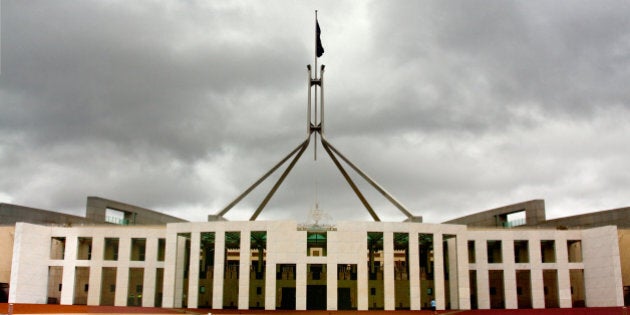
CANBERRA -- The Australian parliament is a weird place; when you bring 150 MPs and 76 senators from all around the country, put them in the same house for weeks at a time and entrust them to make decisions for the whole nation, it's only inevitable that tempers and egos will fly.
The Canberra press gallery do their best to keep up with all the madness going on from sunrise to sunset and well into the night, but not even the large contingent of journalists can be everywhere and cover everything at once; unfortunately, sometimes even the most bizarre and incredible statements slip by without notice.
Which is why the new 'Found In The Hansard' Twitter account is a godsend, as it chronicles all the weirdest moments of our parliament, from the House of Representatives and the Senate through to the small committees that never make it to the front page.
The hansard is the documentary record of what happens in official parliamentary proceedings, the transcripts of House, Senate and committee meetings. A 21-year-old student is behind the Found In The Hansard account, combing the parliament's records to unearth the weirdest parts.
"I started the account because for ages everyone has been very confused about why I love to watch Parliament and read Hansard so much, and think I'm crazy when I respond by saying that I think it's so hilarious," the student -- who said they preferred to "remain relatively anonymous" -- told The Huffington Post Australia in a Twitter direct message.
"They just don't understand how the official transcripts can be so "funny". So I set up the @InTheHansard account to tweet out the highlights, just to show how amusing, entertaining and engaging Parliament can be."
The account, which started tweeting on February 3, tracks down explicit language, name-calling and bad jokes made by our politicians. The student said politicians Sarah Hanson-Young, Katy Gallagher, Scott Ryan, Alannah MacTiernan and David Leyonhjelm follow the account, as does the account run by Bill Shorten's media unit. The account's creator said they skim read the latest hansard as often as possible, looking for certain key terms, but that they do keep a lookout for a few infamous parliamentarians who have a track record of good form.
"I do pause when certain names come up. I was very disappointed to hear Bill Heffernan announce that he won't be contesting the next election. He will be sorely missed," the student said.
Heffernan is a serial offender for somewhat unparliamentary language -- for instance, this tweet from Found In The Hansard led us to put together this Vine:
"I suppose the goal of the account is to get more people interested in Australian politics, and to show them that it isn't really dull as it's sometimes portrayed," the student said.
"While the account has a lot of fun catching politicians when they perhaps don't appear as sensible as one might expect, I do believe that most of them are working hard for their constituents, and think that it's simply a bit of fun to show some of their lighter sides."
For more hansard hilarity, check out Found In The Hansard.